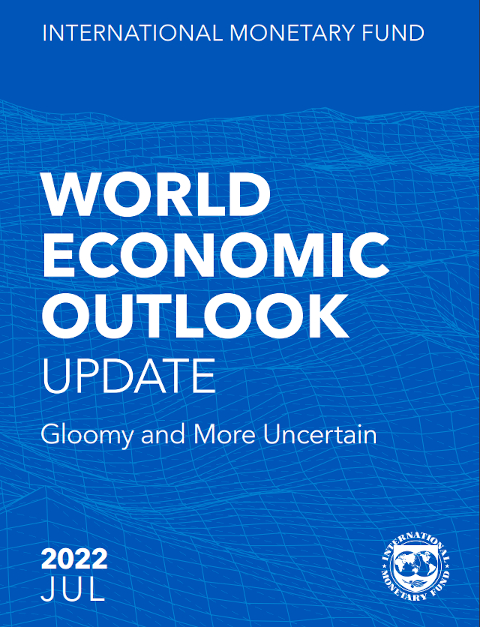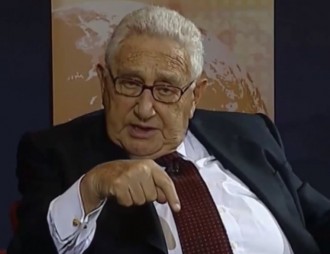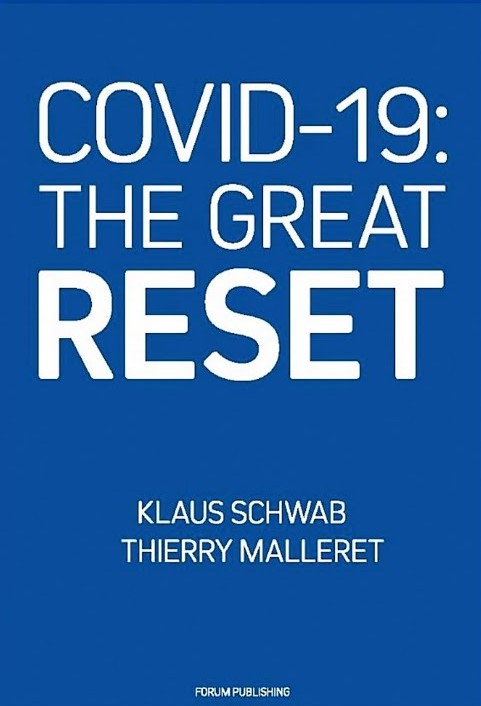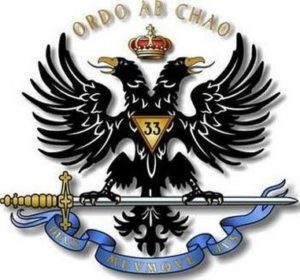THE GREAT MISDIRECTION:
Multipolar World Order and
Revelation’s ‘Ten Kings’

PURSUIT OF REGIONAL BLOCS NOT ‘THEORY’ – IT’S FACTUAL REALITY
By Tim Porter, CircumspectNews.com
March 17, 2025–Update March 31
As MAGA supporters continue to celebrate an economic nationalist in the White House, there remains a gnawing perception that some kind of authoritarian globalist system is still a threat to emerge in the not-too-distant future.
Although the nation has been granted a reprieve, the seething Leviathan has not been subdued. The scheming lawfare continues. Embedded terrorists and bureaucrats, anarchists and other chaos agents lurk in the shadows.
Mass real-time AI surveillance, political cyber-censorship, central bank digital currencies, and social credit systems continue to be developed by governments around the world. Wars, crises, plandemics and staged color revolutions could conceivably cause a coalescence of these technologies into a dystopian future under a global cyber-government, such as that portrayed in the Bible’s Book of Revelation.
Where on earth could they be?
But Revelation’s end-time narrative does not begin with such a monolithic “one-world” government. The narrative is introduced as a beast system having ten kings (the “ten horns” of Rev 13:1 and 17:3), “which have received no kingdom as yet; but receive power as kings one hour with the beast” (Rev 17:12-13 KJV).
So, as technologically feasible as the Revelation “mark of the beast” narrative has become, wouldn’t the ten kingdoms that precede it be materializing as well? Could they be developing at this very moment? The supposed demise of globalization provides a clue.
Fragmentation: The great misdirection
Globalism is dead, at least according to BlackRock’s Larry Fink and other lamenting globalists. “Fragmentation” of the global order, and of overextended global supply chains, is the reported cause of death. A “multipolar world order” is now the order of the day. The International Monetary Fund (IMF) ominously described this trend in its July 2022 World Economic Outlook:
A serious risk to the medium-term outlook is that the war in Ukraine will contribute to fragmentation of the world economy into geopolitical blocs with distinct technology standards, cross-border payment systems, and reserve currencies.
The IMF followed up on that assessment in its May 2023 report, as it diagnosed “reduced cross-border trade flows…and foreign direct investment…that could result from the world fragmenting into multiple blocs….” And on March 30, 2023, a Financial Times of London headline warned: “Prepare for a multipolar currency world.”
The new mercantilism:
‘competing regional units’
In a curiously worded forecast 16 years ago, master globalist insider, the late Dr. Henry Kissinger, accurately predicted the fragmentation of globalism that would occur over a decade later, ostensibly due to the COVID and Ukraine breakouts. In retrospect, Kissinger’s January, 2009 New York Times op-ed, “The Chance for a New World Order,” was more of a threat than a mere prediction. In his characteristically solemn tone and euphemistic language, Kissinger warned:
In the end, the political and economic systems can be harmonized in only one of two ways: by creating an international political regulatory system with the same reach as that of the economic world; or by shrinking the economic units to a size manageable by existing political structures, which is likely to lead to a new mercantilism, perhaps of regional units. A new Bretton Woods kind of global agreement is by far the preferable outcome….The alternative to a new international order is chaos….Such a return to mercantilism and 19th-century diplomacy would divide the world into competing regional units with dangerous long-term consequences.
In other words, according to Kissinger, either the nations will accept a de facto world government to compliment the globalist trade system, or the world will devolve – not back into nation-states, mind you — but into a “new mercantilism” of competing regional blocs.
Regional protectionism
During historic mercantilism of the 16th-to-18th centuries, treaties, royal marriages, and expedient relationships sealed inter-empire alliances that shifted as relationships soured, and greater threats arose. The period was characterized by political and economic consolidation of power and resources from the far reaches of each competing empire.
Kissinger’s new mercantilism is to result in regional-bloc jurisdiction over the harnessing of resources from member nations within each bloc, to counter the conceived or perceived threats from other blocs. The new mercantilism is a dire prediction of “regional protectionism,” conjuring up fierce trade competition, emergency powers, shifting regional alliances, crises, and perpetual war among regional blocs, jostling for advantage.
‘The Globalization Myth’
But hold on. Fragmentation can be a good thing, according to other, more-contemporary globalists. In fact, globalization, they say, was never really a thing at all. The blood and treasure spent on setting it up by these same globalists all went toward an illusion.
In Shannon K. O’Neil’s book, The Globalization Myth: Why Regions Matter, the senior vice president of the Council on Foreign Relations attempts to distance globalists from the very real global mess that they gave us. O’Neil tries to walk back the delusional globalist mindset into a more “sustainable” regional context.
O’Neil presents a “regionally focused world” as the true reality, citing the European Union’s common labor pool, passport and currency as its model. But O’Neil sidesteps the fact that this “reality” is being created. This “reality” is based upon a series of multilateral/bilateral agreements favoring the same utopian-globalist mindset that gave us open-border chaos and the global-supply-chain debacle in the first place. And this “reality” plays down the dark side of Kissinger’s forecast — the epic magnitude of regional mercantilism.
‘The Great Reset’
World Economic Forum founder Klaus Schwab employed the same stratagem in his book, “COVID-19: The Great Reset.” Schwab wrote:
The most likely outcome along the globalization-no globalization continuum lies in an in-between solution: regionalization. The success of the European Union as a free trade area or…(a proposed free trade agreement among the 10 countries that compose ASEAN) are important illustrative cases of how regionalization may well become a new watered-down version of globalization…. COVID-19 will just accelerate this global divergence as North America, Europe and Asia focus increasingly on regional self-sufficiency rather than on the distant and intricate global supply chains that formally epitomized the essence of globalization.
Planned strategy
But drilling down further, it becomes apparent that today’s regionalization isn’t just the reactive result of a compromise that waters down globalism to accommodate nationalists, as Schwab deceitfully suggests. It has been the planned, incremental misdirection strategy toward globalism all along, for generations.
Lincoln P. Bloomfield Sr. was a long-time political science professor at MIT, a State Department official for 11 years, and author. His son, Lincoln P Bloomfield Jr. was an assistant secretary of state in the George W. Bush administration.
In 1962, before the concept of a European Union was even imagined by the general population, Bloomfield Sr. was tasked under contract with the State Department to prepare a feasibility study containing a scenario in which a global government could occur.
Bloomfield’s report, entitled A World Effectively Controlled by the United Nations, outlined the steps necessary, including specific intermediary stages in which “ever-larger units evolve,” eroding nations into a gradual process of regionalism, “until ultimately the larger units coalesce under a global umbrella….”
Bloomfield assessed that such a gradual process could take several hundred years to develop the consensus necessary among populations, unless the process were short-circuited by sudden jolts to accelerate its development. “This relies on a grave crisis or war to bring about a sudden transformation in national attitudes,” he concluded. “According to this version, the order we examine may be brought into existence as a result of a series of sudden, nasty, and traumatic shocks….”

Kissinger himself, in his 2014 book, appropriately entitled World Order, outlined this incremental strategy toward global government:
The contemporary quest for world order will require a coherent strategy to establish a concept of order within the various regions and to relate these regional orders to one another.
‘You’re going to see regional orders spring up’
The regional order theme was repeated by Frederick Kempe, who is venerated by globalists as president and CEO of the Atlantic Council. (At least six former CIA directors are on its board of directors.)

During a panel discussion at the 2022 World Government Summit in Dubai, Kempe had this to say about the regional path to world order:
“I think you’re going to see the evolution of regional organizations, and that regional – because it’s so hard to create a world order – I think you’re going to see regional orders spring up. And then you would have links between regional orders. But they will be very much guided by economic interests, social interests and also security interests….”
Even the Middle East?
Kempe seems to have a fixation on the establishment of regional orders patterned after the European Union. After what amounted to an exit speech to the Atlantic Council by then-Secretary of State Antony Blinken in the final week of the Biden administration, Kempe sat down to question Blinken about one of globalism’s most Herculean projects: a regional order in the Middle East:
KEMPE: “This path to the future – and let’s not forget where Europe was up until 1945, before the European Union, before NATO, before all of that. You talked, I think, about Saudi normalization almost in that spirit. And some people have talked about a path of integration that could create economic integration in the Middle East like the European Union, military integration – not a NATO necessarily, but countries coming closer together. Are we closer to that now?….”
BLINKEN: “Look, I believe we’re much closer to it. And what we’ve done over the past four years, building on the Abraham Accords, was to try to get to their ultimate realization, which is normalization between Saudi Arabia and Israel. A lot of work went into that, including, as I described, agreements necessary between the United States and Saudi Arabia as well as between Saudi Arabia and Israel. And as we sit here, it’s ready to go. That could move forward tomorrow.”
(Of course, the Biden administration’s version of Middle East normalization was predicated upon a “two-state solution” with a Palestinian state, which is a non-starter for Israel, and is not addressed in President Trump’s current proposal for Gaza.)
Putin too?
Even Vladimir Putin, the supposed enemy of globalism, is a fan of the regional, incremental approach to world order. Posted on Izvestia on October 4, 2011, Putin’s op-ed column was also featured on the official Mission of the Russian Federation to the European Union. Putin wrote:
It took Europe 40 years to move from the European Coal and Steel Community to the full European Union. The establishment of the Customs Union and the Common Economic Space is proceeding at a much faster pace because we could draw on the experience of the EU and other regional associations…. We plan to go beyond that, and set ourselves an ambitious goal of reaching a higher level of integration – a Eurasian Union…. We believe that a solution might be found in devising common approaches from the bottom up, first within the existing regional institutions, such as the EU, NAFTA, APEC, ASEAN inter alia, before reaching an agreement in a dialogue between them. These are the integration bricks that can be used to build a more sustainable global economy.

Putin’s article has been posted on the RFEU website for many years, and may still be posted today, although the websites russiaeu.ru and russianmission.eu are now flagged as possible cyber-security threats. An October 3, 2011 Reuters article also reported on Putin’s column.
Compare Putin’s words with those of Schwab, Kissinger, and Kempe, above. If Putin is such an enemy of globalism, why is it that his description of regionalism as an incremental path toward a global structure is virtually identical to theirs?
In answering that question, it would be helpful to know that Putin and Kissinger, who would seemingly be antagonistic to one another, were friends for many years. The November 30, 2023 London Daily Mail contained Putin’s eulogy of Kissinger as an “old friend.” The Daily Mail continued, “Putin maintained a relationship with Kissinger since the 1990s when the pair first met in Russia, bonding over their careers in intelligence.”
Resistance training
Putin and his Eurasian-Union construct have long been the designated antagonist to the European Union. But even that hostile relationship reveals a certain amount of gratitude that the regional rivals have toward one another.
A Breitbart London headline on March 14, 2014, declared: “Vladimir Putin: Hero of the European Union.” It began, “Vladimir Putin’s adventurism in the Ukraine has had a strange side effect: it may well have prolonged the life of his chief rival and antagonist – the European Union…”
Russia’s RT (Russia Today) returned the kudos on March 20: “Western Sanctions against Russia may boost Eurasian Economic Union.”
The next day, a German DW (Deutsche Welle) headline read: “Thank you, Mr. Putin,” explaining, “With your annexation of the Crimea you have thrown a much-needed lifeline to…European integration…” (The brazenness of the headline likely caused its change for the archives.)
A more recent observation was made by City Journal, March 17, 2022. Headlined, “The Great Eurasian Economic Realignment,” it stated, “What has not been widely considered, however, is the possibility that Russia welcomes this outcome. If Russia is betting on economic divorce from Europe, including in energy, then sanctions and boycotts counterintuitively support, rather than frustrate, Russian strategy.”
This strange benefit derived from a nemesis threat is the epitome of the new mercantilism in practice. Frictions among all regions will ultimately develop them all, in similar fashion. That is the globalist version of resistance training.
MEP: Trump, Putin “the new founding fathers of the European Union”
‘The European Union is the model’
In his 2011 op-ed, Putin acknowledged that he drew upon “the experience of the EU” as the standard model toward achieving his Eurasian Union. It is also of interest that Putin named other regional organizations as “bricks…to build a more sustainable” global structure.
Putin’s article was written two years after the first BRICS summit in Russia. And it was ten years after Goldman Sachs economist Jim O’Neill first coined the acronym “BRICS” for the nations — Brazil, Russia, India, China, and South Africa — that O’Neill predicted would rise to challenge the economic powers of the West.

Of further note is that these five countries just happen to be the most powerful “anchor nations” in their respective regional areas: Brazil in South America, Russia in the Eurasian Economic Union, India in South Asia, China in East Asia, and South Africa in the African Union. In Putin’s view, trans-regional organizations like BRICS, and global, umbrella organizations, such as the UN, WTO, WHO, etc., are the “mortar” that eventually will bond the regional blocs together.
But Putin was not the first publicly to list regional organizations by name. In a speech one month after 9/11 in 2001, Guy Verhofstadt, then the prime minister of Belgium and president of the European Council, posited that the world’s existing regional blocs could be essential components of a “global form of federalism.”
Entitled “The New World Order Since 11 September,” Verhofstadt’s speech listed the EU, ASEAN (SE Asia), Mercosur (South America), NAFTA (now USMCA), the African Union, the Arab League and SAARC in southern Asia. “The New World Order could lead to a new G8, G9 or G10, with regular meetings between the delegates of the world’s continents” he said, adding, “The European Union is the model….”
Before that time, most public references to any regional structure were only theoretical constructs, as none of the trade blocs were even conceived before the end of World War II. In 1973, the Club of Rome released a map dividing the world into ten regions, designated only by numbers.
It was the transcript of Verhofstadt’s speech that led this writer to begin internet searches for regional blocs by name. That led to the publishing of the website, CircumspectNews.com in 2011, as a depository to document and chronicle the ensuing years of massive search results.
Land Rush 2.0:
Fortress North America
Now that he is able to maneuver in the swamp without the native swamp guides, President Trump’s second term has gotten off to a better start than his first. It is safe to say that he has not been a globalist team player. But there is one concerning irony to his MAGA objectives, within the context of regionalization.
Aside from the obvious trade and border concerns, Trump’s awareness of the need for greater energy production to support AI development is apparently behind his persistent chiding of Canada to become the 51st US state.
AI’s energy requirements appear destined to be the world’s ultimate motive for an intense global natural-resource grab. Of course, that very pursuit of resources is a major characteristic of both the historic mercantilism of empires and the current regional-bloc version.
Add to that dynamic the appearance of Mar-a-Lago visitor, Canadian Kevin O’Leary on numerous interviews, as a followup whenever Trump makes a statement about Canada. O’Leary insists that Trump is just exercising the Art of the Deal, and that his bombastic statehood comments mask his real objective, which is “only,” according to O’Leary, “economic union.”
In his many social-media posts, Trump has never publicly distanced himself from O’Leary’s comments, and that should be of great concern to MAGA supporters.
On a bar graph of the “Five Levels of Economic Integration,” studied in nearly all international-business and global-studies programs on earth, “economic union” is at level 4, just below “common government.” USMCA “free trade” is only at level 1.

In addition, Trump’s Treasury Secretary Scott Bessent has suggested that Canada join Mexico’s recent counter proposal to match its tariff percentages on China with that of the US. Bessent said that would result in a “Fortress North America‘ from the flood of Chinese imports.
Such a move would be a significant step toward a common external tariff policy for North America by the three USMCA member nations. “Common external tariffs” would define a “customs union,” level 2 of the “Five Levels of Economic Integration.”
It may be true that Trump’s objective for “Fortress North America” is simply to project Trumpian US nationalism and security throughout the continent. But if that objective includes economic union and a common external tariff policy, the end result would be no different than that sought by any of today’s globalists — a North American regional bloc, poised to defend itself in the new mercantilism.
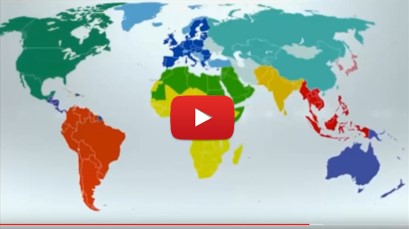
VIDEO: Global Shakedown (2015)
‘The world is changing’
So, there appears to be a great deal of talk and action to bring about this New World Order of regional blocs. The magnitude of such a global event would appear to be one the most significant geopolitical movements in world history. So why is it that so many populations are not even being made aware of it?
Libyan strongman Muammar Qaddafi, who was deposed in 2011, wondered about that himself during his clashes to lead the African Union in the year before he was killed. As quoted in the New York Times, January 31, 2010, Qaddafi retorted:
“The political elite of our continent lacks political awareness and political determination. The world is changing into 7 or 10 countries, and we are not even aware of it.”
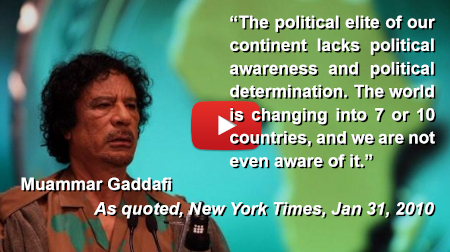
VIDEO: BLOC HEADS: Builders of the New World Order (2013)
In this current media-information vacuum regarding regional-bloc development, many Bible scholars have never even considered the regional-bloc scenario as a possible fulfillment of the “ten kings” prophecy. So, in their attempt to identify who and where these coming kings and kingdoms could possibly be, various other less-plausible possibilities have been offered.
One current view is that the kings are ten oligarchs presiding over sectors of the global economy, such as big tech, oil, finance, health, etc., in some sort of public-private partnership. The view is vague and lacks biblical precedent and consistency, since Bible kings were always kings over geographic kingdoms. It is certainly inconsistent with the prophetical context of Daniel chapter 2.
‘Revived Roman Empire’?
During the Cold War in the 1960s, the most prominent view was that, since the ten kings are determined by Daniel’s ten-toes prophecy to be a revival of the Roman Empire, then it could be fulfilled once the European Common Market membership reached ten nations, but only within the periphery of the original Roman Empire. That seems geopolitically impractical today, since there are now 28 nations in the EU that are hard-pressed individually to govern themselves, much less to “devour the whole earth” (Daniel 7:23 KJV).

A revived Roman Empire is indeed consistent with Revelation’s biblical context with Daniel, but it would more reasonably accommodate the regional bloc scenario. As a bloc, the EU is the leader and accepted model to which all other regional blocs aspire. Its regulatory system is well advanced to impose its established trade rules and old-money financing upon other, less-advanced regional organizations. Ancient Rome provided precedent, utilizing regional jurisdictions within its empire. The British Commonwealth provided a rough, expanded blueprint for a global structure.
In 2016, the EU released its Global Strategy document that vowed to support and “invest in regional orders” and “regional governance” for North America, South America, the Middle East, Africa, and other regional blocs around the world.

Fragmentation: ‘the toes’
But perhaps the strongest consideration for the regional-bloc scenario is that its new-mercantilism fragmentation pretext, now being imposed to build this beast, most accurately fits the Bible’s Daniel description of the ten toes of Nebuchadnezzar’s dream:
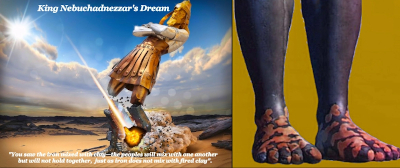
And as the toes of the feet were part of iron, and part of clay, so the kingdom shall be partly strong, and partly broken. And whereas thou sawest iron mixed with miry clay, they shall mingle themselves with the seed of men: but they shall not cleave one to another, even as iron is not mixed with clay. Daniel 2:42-43 (2:27 – 2:45 KJV – also see Matthew 12:25-26)
World order out of chaos
When the Revelation beast initiates his marking system, it marks the beginning of his New World Order. It is the world’s final attempt to realize the “order out of chaos” mantra that has been the actual belief of occult groups, secret societies, and mystery religions for millennia.
The Bible teaches that Christians will not be on earth to experience the beast’s ruthless “order,” or to endure God’s judgment upon him and his marked initiates (a subject for another study). But that does not preclude Christians being on earth during any man-made chaos that precedes it.
So, will a new mercantilism of wars and chaos empower a global network of regional orders, actually resulting in the literal fulfillment of the Revelation “ten kings” prophecy? At this point in time, no one knows for sure.
But this much is certain: The pursuit of a similar number of regional blocs, by today’s collection of delusional globalist utopians, is not a “theory.” It is a factual reality.





